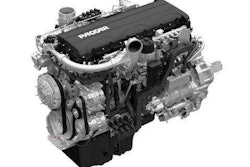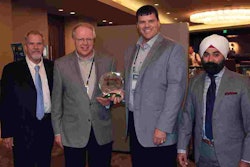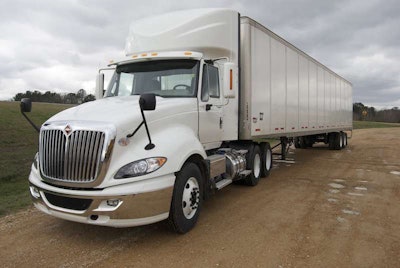
As more carriers regionalize their delivery patterns, many companies have had to re-evaluate their need of large sleeper tractors.
In some cases, the flexibility offered by a big sleeper makes a lot of sense but to some customers, the efficiency gains from smaller lighter trucks is hard to ignore.
“… we’ve seen a more pronounced shift entirely away from any size of sleeper to daycabs over the last five years or so,” says Scott Perry, vice president of supply management and global product management at Ryder. “We’ve seen development of more regional-based delivery operations where a driver can work a shift and then go home. This is more a function of driver lifestyle quality and the ability to recruit and retain drivers versus operations where sleepers and multi-day dispatches were previously the norm.”
Kevin Koester, Ford’s medium duty truck and Super Duty fleet brand manager, says Ford has targeted those same fleets with F-650 and F-750 Super Duty models.
A non-traditional player in the tractor space, Koester says the company has successfully converted customers looking for smaller and lighter haulers once they climb in the cab.
“For the tractor guys, we just need to get them behind the wheel,” he says “They’re used to what they have. That is a vocation where they can be pretty loyal to the trucks they already have, but it just takes time to have something like [F-650 and F-750] out there in the field and feel comfortable when you’re towing 30,000 and 40,000 pounds every time.”
Ford’s heaviest Super Duty and its 6.7 liter diesel engine has already begun to carve out a niche in several applications, Koester says, including beverage delivery, moving companies and car haulers.
“The guys who actually haul [Ford’s fleet cars], we put two tractors with them and they’re running five-car haulers with them,” he says. “They’re going across the country, up and down through the mountains, and it’s working great for them.”
Anthony Gansle, Peterbilt’s on-highway marketing manager, says the shift toward smaller trucks is what led the company to develop a 58-inch sleeper last year.
“There is certainly a measurable trend toward fleets wanting the flexibility to spec trucks with smaller sleepers to accommodate more regional routes and new logistical strategies,” he says. “Our customers wanted the same Peterbilt quality, comfort and amenities drivers expect but in a smaller sleeper size, and the 58-inch sleeper length has been received very well.”
Making sense of the switch
A conversion to something smaller isn’t something that should be done from a gut feeling. Steve Gilligan, Navistar’s vice president of product marketing, says those decisions should be made with caution.
“A few years ago, we started seeing a migration away from larger sleepers to smaller sleepers,” he says. “What was driving that was there were fleets that were trying to blur the line in what they considered regional haul and long haul trucks.”
The movement toward a common spec for those fleets, he says, caused more issues than it solved.
“I think there was some movement with fleets that wanted to standardize their specification and move to a more common single specification,” Gilligan adds, “but the same fleets that initially did that found it was causing them to have other issues, primarily in the area of driver retention.”
As a result, fleets that pushed toward a single spec had to diversify back to both what would traditionally be considered regional haul trucks and long haul trucks.
“Fleets want to provide more amenities, more perks for drivers,” Gilligan says. “That’s a consistent theme I think also on vehicle specification. If a guy can have a flat-top shorter sleeper versus a full height walk-in with a larger bunk, which one would you prefer to drive for?”
Large sleepers don’t necessarily have to be an advantage in driver retention.
Kenworth Marketing Director Kurt Swihart says there are plenty of premium features – like audio and satellite radio, premium seats, television packages and upgraded mattresses – available on smaller sleepers to make them more comfortable.
Added size means added flexibility
For fleets willing to hang on to them, larger sleepers also offer greater flexibility for fleets tasked with longer hauls on a sporadic basis.
“A fleet that has a vehicle set up for long haul can still do regional haul with those vehicles, especially for back hauls,” Gilligan notes. “It just gives them more flexibility in deployment.”
“We find that interest in smaller displacement engines and smaller sleepers have resulted from denser freight, reshored manufacturing and changing freight movement patterns,” Swihart adds. “Freight is becoming denser as shippers load heavier items and more pallets per trailer. To accommodate those denser loads, trucking companies generally have two choices: choose lighter weight specifications for their trucks so that each unit can carry more freight or add more trucks to carry the loads.”
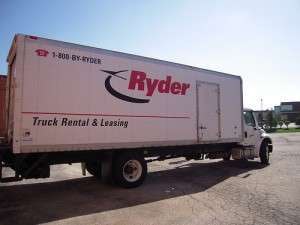
“For a regional haul spec, which traditionally is going to be a smaller sleeper or a day cab, we’re really not seeing a lot of change,” Gilligan says, adding sleeper order volumes year-to-date have been flat on recent month-to-month basis. “As of April 2016, [International’s] split for sleepers is 48 percent and split for day cabs is 52 percent.”
For all OEs, the split is 46 percent sleepers and 54 percent day cab, including severe service, according to ACT Research.
“We haven’t really seen that change in 10 years,” Gilligan adds. “We’re seeing a consistent amount of day cab versus sleeper split over time.”
Mary Aufdemberg, Freightliner Trucks’ director of product marketing says the company’s largest sleeper is still its most common spec.
“For on-highway heavy-duty applications, we haven’t seen an increase in the number of smaller sleepers,” she says, “and the 72-inch BBC Freightliner Cascadia Evolution spec’d with a Detroit DD15 downsped engine remains our most popular product.”
Swihart, though, says he expects daycabs to carve out a larger order slice in the years ahead as freight destinations get closer.
“With fewer loads needing to cross from one coast to the other or from one part of the United States or Canada to the other, we anticipate the demand for smaller sleepers and smaller-bore engines to continue increasing,” Swihart adds.
While Ryder has seen its most common spec shrink in size, Perry says when customers still need a sleeper, it’s go big or go home.
“… we are not seeing a material shift away from full-size, stand-up configuration to mid-roof or smaller configurations,” he says.
Embracing the smaller sleeper
For weight sensitive operations, Swihart says his company has seen increasing interest among fleets for Kenworth’s 52-inch mid-roof sleeper with its saving of up to 700 pounds versus the 76-inch sleeper.
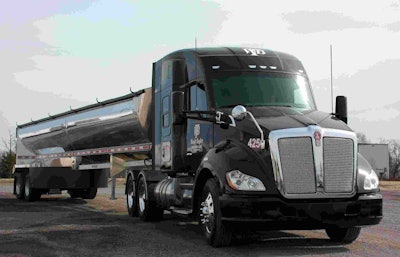
“I’m making the T680 mid-roof sleeper our new standard going forward,” Tracy Bogler, president of Woody Bogler Trucking, says.
“While smaller, it still provides drivers ample room for storage and a comfortable environment to work productively and get the rest they need,” Swihart says. “In the Kenworth T680 or T880, the 52-inch mid-roof sleeper provides the height needed for a driver or passenger up to 6’4” to easily stand up between the seats.”
Applications like bulk transport, where smaller sleepers have traditionally been favorable, are still the primary market for that spec.
Otherwise, fleets have to look for light-weighting gains from day cabs or offsetting efficiency gains from a full-size sleeper.
“You will also likely find that a full-sized, stand-up sleeper configuration often provides the best aerodynamics when compared to mid-roof configurations,” Perry adds, “especially where a standard, full-height trailer is being utilized.”
Swihart says Kenworth’s smallest 40-inch sleeper has drawn interest from truck operators who might typically use day cabs, such as petroleum haulers, towing operators, and flatbeds haulers, for whom length and weight can be deciding factors.
“But the sleeper can also be a good fit in the Kenworth T680 for regional bulk haulers who prefer to operate a highly fuel-efficient tractor,” he says. “The sleeper provides a 260-pound weight savings compared to Kenworth’s 52-inch regional sleeper.
Bolger says even though his company dropped down in sleeper size by more than 20 inches, his drivers have been happy with the available space.
“They like the bigger, wider cab and extra roomy space between seats,” he says. “They like the extra headroom. Mostly they like the way the T680s handle and drive. Paccar MX-13 engine power is good, and visibility is excellent with the shorter hood.”



